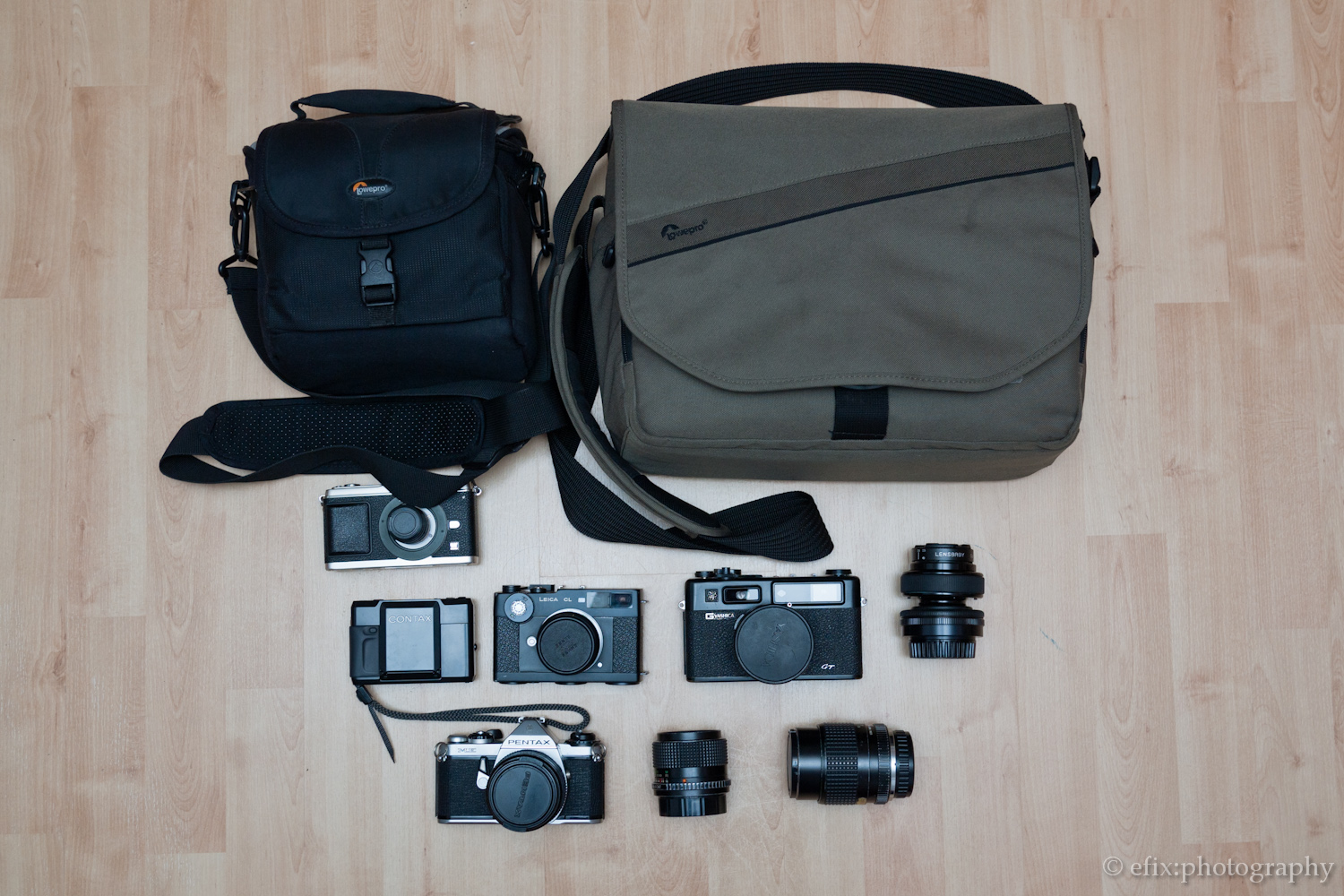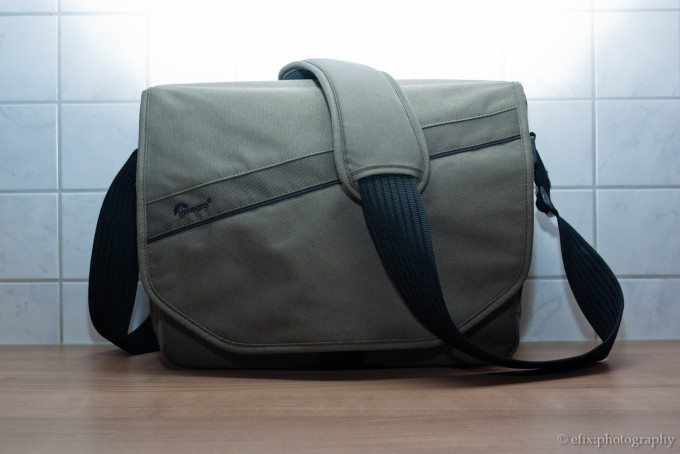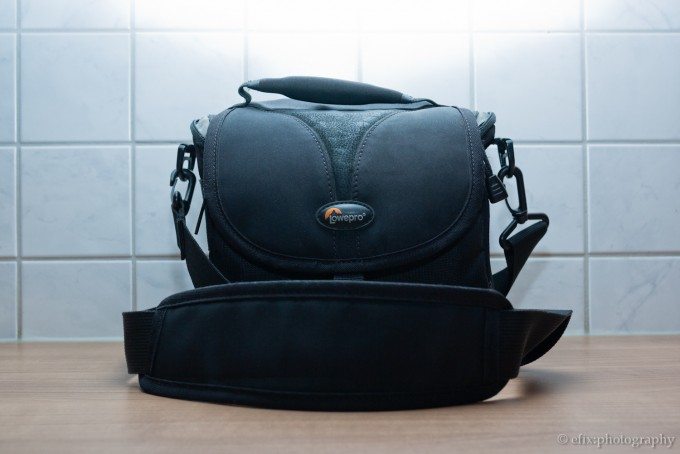Last Updated on 12/12/2012 by Chris Gampat

I’ve had my fair share of cameras, both digital and analog, in recent years. Which is both good and bad. Good, because I learned a lot about photography — both from the technical as well as the artistical standpoint –, and bad, because at times I found myself in a constant loop of buying and selling. I spent a lot of money on different pieces of equipment, just to sell it with loss afterwards. And while searching for that one, perfect, ultimate camera kit, I figured something out. It’s not the gear that makes you happy. It’s the pictures you take. So I made a rather bold decision, namely to sell my beloved Leica M8. Not because it didn’t take good pictures, or because I didn’t enjoy using, but because I figured that I didn’t need such an expensive piece of technology to take great pictures. Quite on the contrary, in fact. What, then, is in my bag now? Read on to find out!
I still have a number of different cameras and lenses, some of which I use more often and some of which I use less often. But all of them do get used, from time to time, when I’m in the right mood. In fact, I hold it a bit like William Eggleston once allegedly stated:
I don’t think about what camera I should use that much. I just pick up the one that looks nicest on the day
Sometimes it’s the camera that looks nicest, sometimes it’s the camera I feel most inclined to use, sometimes it’s the one that’s the most convenient that day. But most of the time, the decision which camera to use depends highly on my mood. The question that begs to be answered now is: which cameras, and which bags?
The Bags
Currently I use two bags frequently. The first, which sees most use, is my Lowepro Event Messenger 250, which is my daily commuting bag. I couldn’t imagine life without it anymore. Each day, it takes my Laptop plus accessories, sandwiches, a camera with lens (varying depending on my daily mood) and small stuff like wallet, keys, cellphone etc. During holidays, this is the perfect bag to take along when I know I want to carry more than just one camera and one lens. To see what fits into it, please refer to my review here.
The other bag I frequently use is my trusty old Lowepro Rezo 140 bag. I got this bag with my first serious digital camera, the Panasonic FZ30. It was perfect for the camera, and also took the battery charger and accessories. Now, it’s my go to bag when I’m only taking one camera plus one or two lenses or accessories, for example the Panasoic G1, Lumix 20/1.7 lens plus Rokinon flash. If the second camera is small, like my Contax T, it may also hold two cameras. I’ve had this bag for over six years now and the zippers are slowly disintegrating. But with its size and the integrated rain cape, it’s still the ideal bag for the small kit.
The Cameras
Camera wise, I own a healthy mix of both digital and analog stuff — though I’ve had my digital kit much longer, as I only recently developed an interest in film photography. My collection can be arranged in three sections: rangefinder cameras, SLR and Micro Four Thirds. Below is a breakdown of what each section actually contains.
The Micro Four Thirds Kit
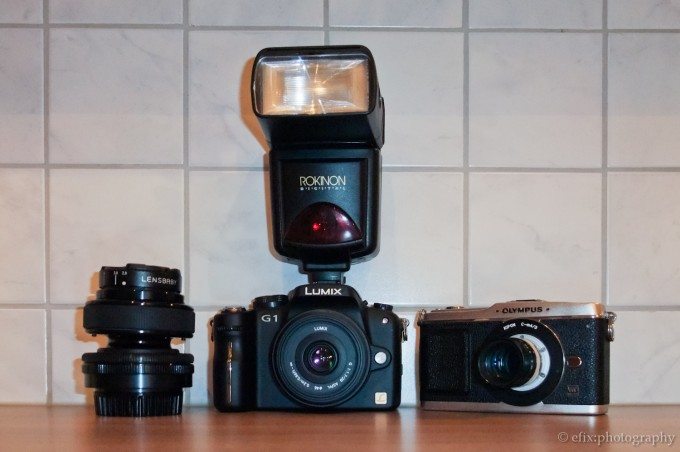
This is the kit which I’ve had the longest. I bought the Olympus E-P1 and Lumix 20/1.7 in the fall of 2009, when I found that neither my Panasonic FZ30 (now sold) nor the Fujifilm F200EXR (now my wife’s camera) were up to the task of taking pictures of my (then) toddler. In retrospective, neither were the E-P1 and 20/1.7, due to the sluggish AF of this particular combo. But the overall image quality and pocketability of that kit is still amazing, which is why I’ve held onto it for so long.
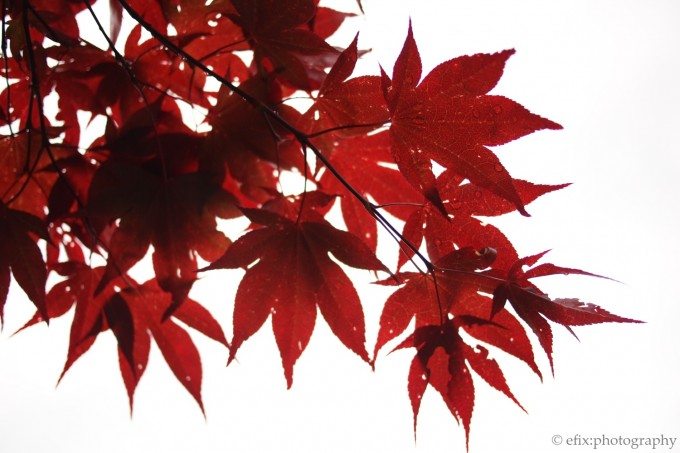
A couple months ago, the Olympus was joined by the Panasonic G1, as I found that manually focusing adapted lenses isn’t much fun on the low-res display of the E-P1. In addition to the Lumix 20/1.7, I have a Pentax 25/1.4 C-mount lens, a Lensbaby Composer Pro with Sweet 35 optic (reviewed here) and an SLR Magic HyperPrime 12mm f1.6 (reviewed here — not in the picture as it’s currently back with its maker). The Rokinon flash (reviewed here) was a gift from Chris Gampat, who found that my product shots could be improved with some proper lighting. I have to admit that he was spot on, and the flash has been getting a lot of use recently. Also not in the picture are my adapters for K- and M-mount lenses, which see frequent use on the G1.
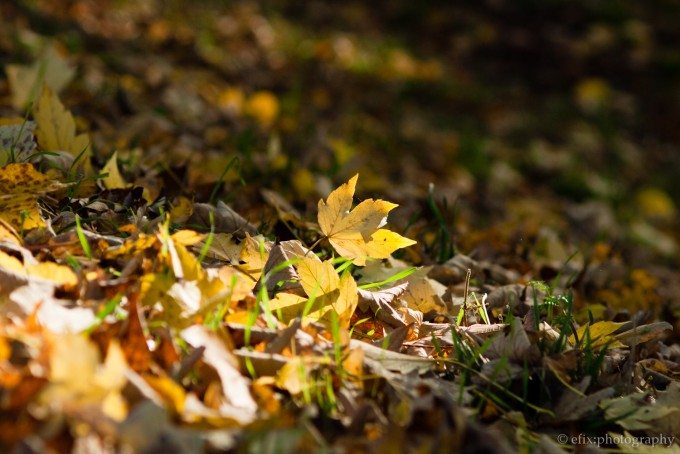
The Rangefinder Kit
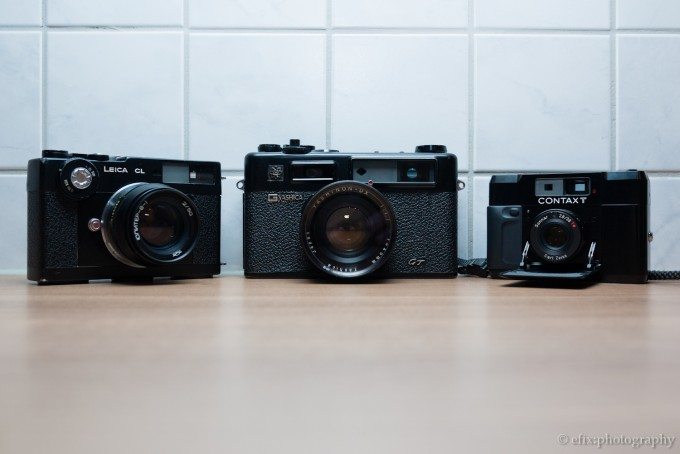
Shortly after getting the Olympus E-P1, I acquired an old OM 50mm f1.8 plus adapter for it. Using an all-manual lens was so much fun that I started searching the internet about manually operated cameras. This is when I eventually learned about rangefinders — and what started a passion that would eventually lead to purchasing a Leica M8 and a whole lot of different M-mount lenses. Meanwhile, as mentioned above, I have sold this kit, but my love for rangefinders is still very much alive.
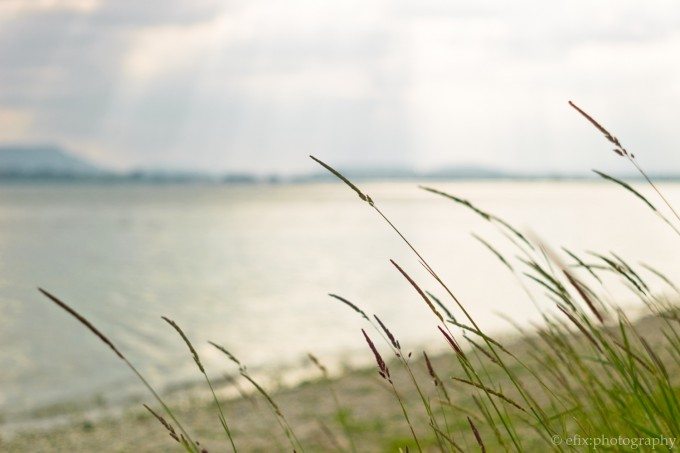
The first rangefinder camera I got was the Yashica Electro 35 GT (see Chris’ review of its cousing, the GSN, here). This camera is an affordable entry into the world of rangefinders, and comes with a fantastic 45mm f1.7 lens. On the downside, it’s rather large and heavy, and due to its age (it was first made in the late 60ies) getting it repaired might be problematic.
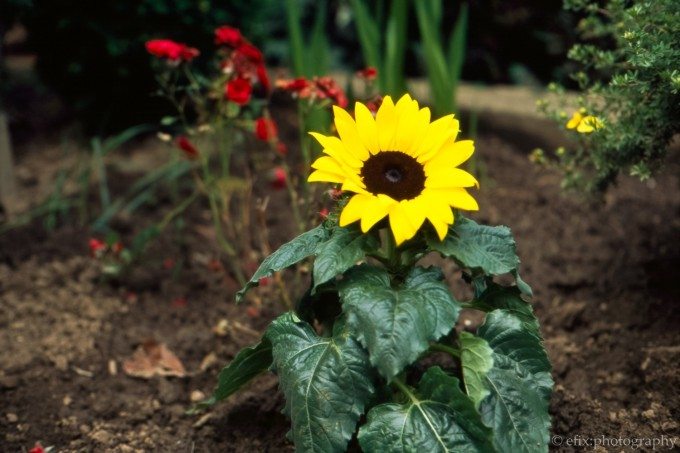
When I first came across the Olympus XA, one of the smallest 35mm rangefinder cameras ever made, I was so intrigued by its minute form factor that I tried to find out more about small 35mm cameras. This is how I eventually came across the Contax T, the little brother of the much more common T2 and T3 point-and-shoots. Unlike its siblings, the T is a proper rangefinder camera with an aperture priority exposure system and an absolutely stellar Carl Zeiss Sonnar T* 38mm f2.8 lens. And unlike the Olympus XA, this one really is the smallest 35mm rangefinder camera ever made.
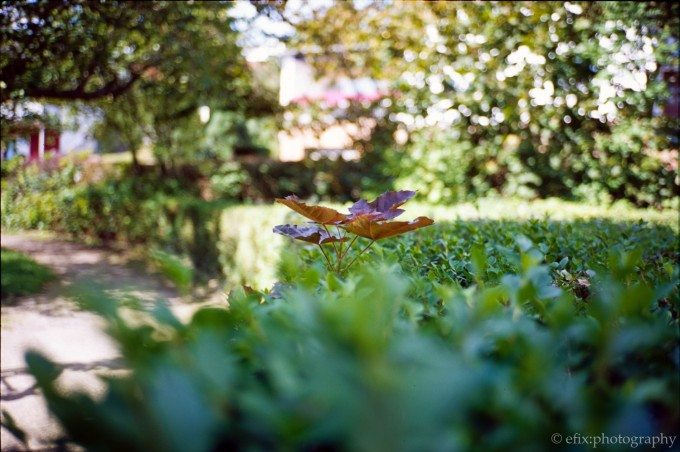
Finally, when I decided to let go of my Leica M8, I substituted it with a Leica CL — the tiny M-mount camera made by Minolta in the 70ies. On the CL, I am using a cheap, Ukrainian-made Jupiter-8 50mm f2 lens. The lens is a copy of the early Carl Zeiss Sonnar 50mm f2 for Contax, and has been made for almost 40 years between the 50ies and 90ies. Mine is a late 90ies model, and despite not being perfectly adjusted for use on a Leica body (these were made for the Ukrainian Leica copies, which had slightly different specs), it can deliver beautiful results when focused properly.
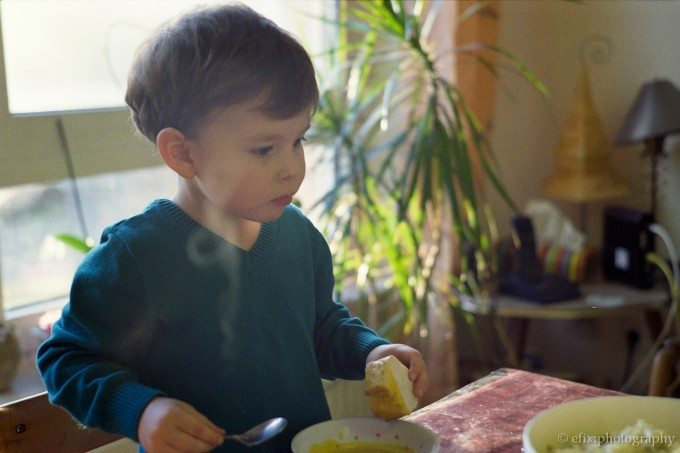
The SLR kit
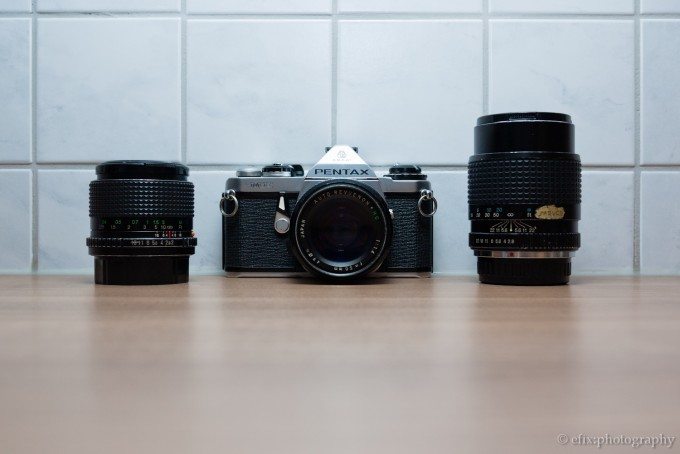
Technically, I’ve been using Pentax ME-series film SLRs for much longer than all the rest of my gear, but since this particular body and lens set only found their way to me recently, I do not actually count them as my oldest kit. My first Pentax ME super was given to me by my grandfather back in the early 2000s, together with the classic Pentax standard lens, the 50mm f1.7. Sadly, I sold this kit a couple years ago when I was no longer using it, not knowing that my love for analog photography would be reborn only a little later.
Last year then, when my Yashica 35 GT broke down, my dad gave me his old Pentax ME plus three lenses, a Cosina 28mm f2, a Revuenon 50mm f1.4 and a Tokina 135mm f2.8. The body eventually stopped working, so I started using the lenses on my Panasonic G1. The 50mm is great as a portrait lens, especially at f1.4 where it shows strong spherical aberrations, while the 135mm is great for tele work. Eventually, I wanted to use the lenses with film again, so I bough a CLA’ed Pentax ME replacement body. It’s no longer my dad’s camera, but close enough to both it and my first serious camera, the old ME super.
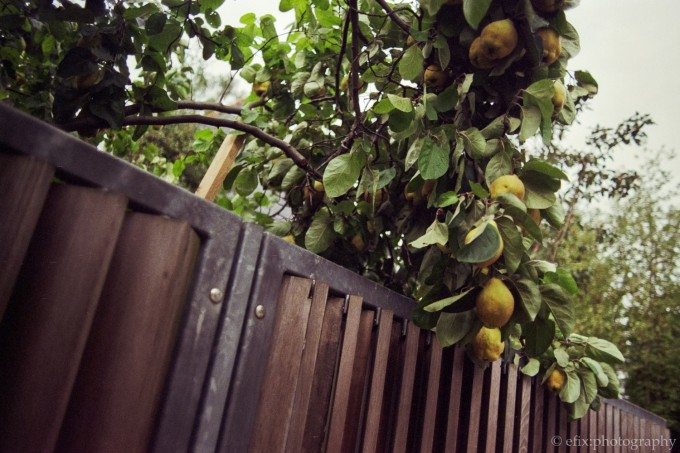
Final Remarks
So, there you have it. That’s what’s in my bag(s). Not all of it at once, of course. Most of the time, I will take only one camera (and lens) along. These days it’s mostly the Leica CL w/ Jupiter-8 lens, but whenever my Contax T is working (currently it’s not, again), I will often take it along for the day. When I feel like going digital, it’s the Panasonic G1 w/ 20/1.7 that I grab most of the time. Only rarely do I pick up the Olympus E-P1 since I bought the G1 — I simply prefer a proper viewfinder over holding a camera at arm’s length in front of me. Finally, the Pentax and the Yashica see the least use. It usually takes me a couple weeks or even months to shoot through one roll of film with either camera. However, I’m currently looking for a 40mm f2.8 pancake lens for the Pentax, to make it more compact and to be able to take it along more often.
Please Support The Phoblographer
We love to bring you guys the latest and greatest news and gear related stuff. However, we can’t keep doing that unless we have your continued support. If you would like to purchase any of the items mentioned, please do so by clicking our links first and then purchasing the items as we then get a small portion of the sale to help run the website.


